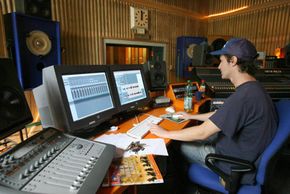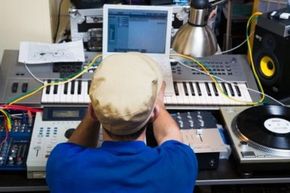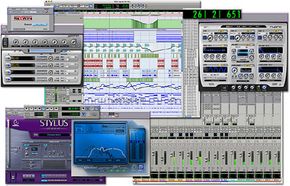MIDI is a rarity in the technological world. Short for Musical Instrument Digital Interface, MIDI is the one and only standard by which electronic musical instruments, computers, software and other digital controllers share musical information. Nobody owns MIDI. Nobody sells it. It just works. If only everything were that easy…
MIDI was invented in 1983 as a simple way for a single musician to control multiple electronic instruments at the same time. Using a single MIDI-enabled keyboard, for example, a musician can play audio on two or three synthesizers, a drum machine and a sampler. When the musician presses a key on his keyboard, it generates MIDI data -- which key he pressed, how long he held it down, how hard he pressed it -- that tells the other instruments exactly what notes to play and how to play them.
Advertisement
Soon people realized that computers could be used to compose, record and edit MIDI data. Using simple desktop software called a sequencer, professionals and amateurs can use MIDI to record and edit multiple tracks of electronic music. Since MIDI is a universal standard, the recorded songs can be played back on any electronic musical instrument or MIDI-enabled device.
The combination of MIDI and powerful home computers has changed the way people make music. A young musician no longer needs to spend thousands of dollars on expensive musical instruments and hours in a professional recording studio. Software packages like Pro Tools and Reason allow anyone to make professional quality music at home using an endless arsenal of virtual instruments.
But MIDI is no longer confined to just making music. The keyboard player can trigger the smoke machine every time he plays a D-flat and can control the lights during a live show. And MIDI data also can help synchronize recording equipment in a large studio.
What is MIDI exactly? And how do musical instruments use MIDI to talk to computers and to each other? Read on to find out.
Advertisement




